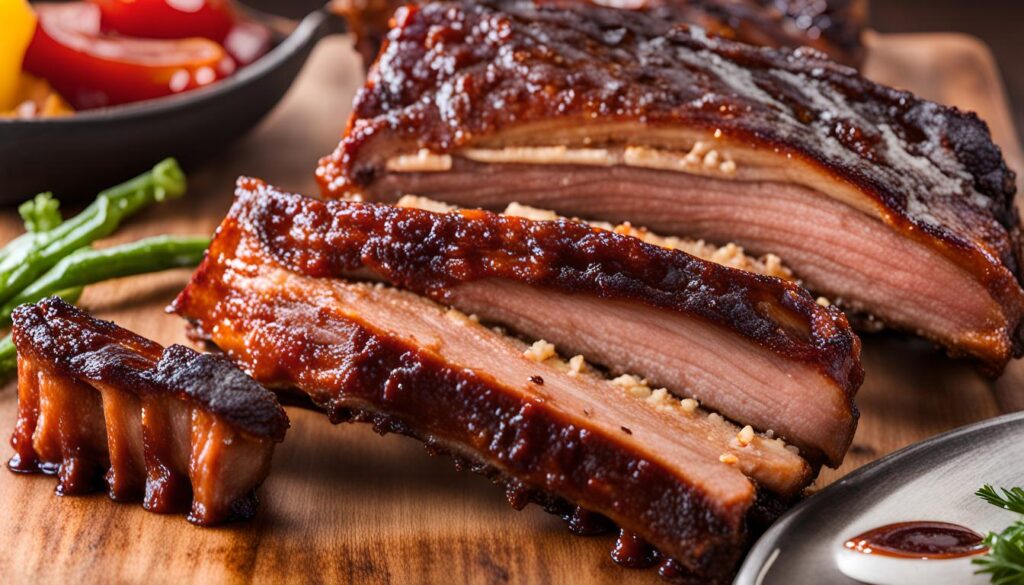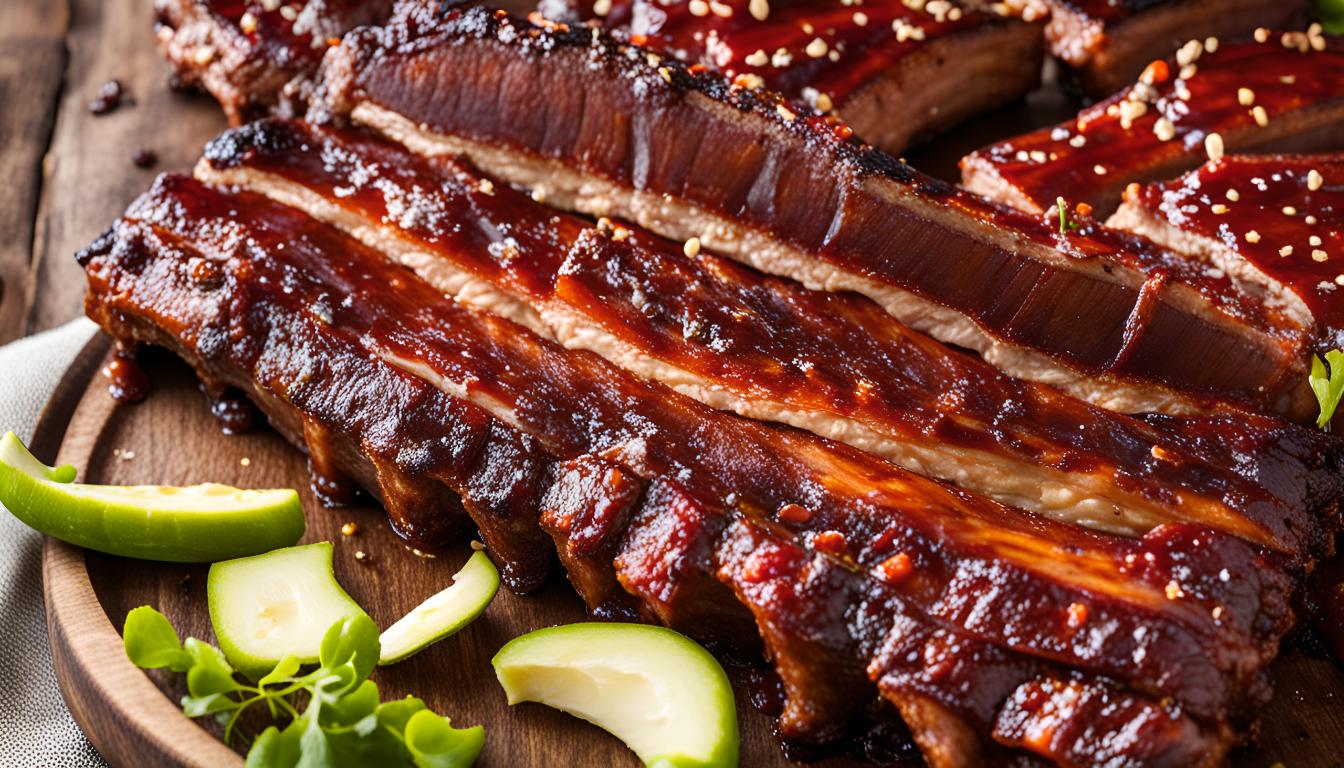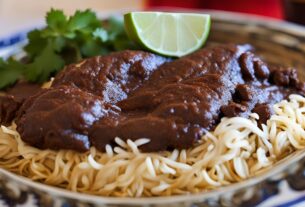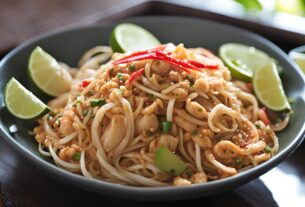Barbecue ribs are a quintessential American dish known for their tender, smoky flavor and sticky, flavorful sauce. Here’s a comprehensive guide to preparing barbecue ribs at home, covering everything from choosing the right ribs to cooking methods and homemade barbecue sauce.
Introduction to Barbecue Ribs
Barbecue ribs are a popular dish in the United States, particularly associated with Southern and Midwestern cuisine. They typically feature pork ribs slow-cooked until tender and then finished with a tangy, sweet barbecue sauce.
Types of Ribs
Pork Ribs
– Baby Back Ribs: These are taken from the top of the rib cage, near the backbone. They are shorter and curved, with meat between the bones.
– Spare Ribs: These are cut from the lower portion of the rib cage, closer to the belly. They are larger and meatier than baby back ribs, with more fat marbling.
– St. Louis Style Ribs: These are spare ribs trimmed to a rectangular shape, making them more uniform in size and easier to cook.
Ingredients
For the Ribs:
1. Pork Ribs: Choose between baby back ribs or spare ribs, depending on your preference.
2. Dry Rub: A blend of spices to season the ribs before cooking. Common ingredients include:
– Paprika
– Brown sugar
– Salt
– Pepper
– Garlic powder
– Onion powder
– Chili powder
– Cumin
– Cayenne pepper (optional for heat)
For the Barbecue Sauce:
3. Ketchup: Provides the base and sweetness for the sauce.
4. Brown Sugar: Adds sweetness and helps caramelize the sauce.
5. Vinegar: Provides tanginess.
6. Worcestershire Sauce: Adds depth of flavor.
7. Mustard: Enhances the tanginess and helps bind the sauce.
8. Spices: Such as paprika, garlic powder, onion powder, cayenne pepper (optional for heat), to enhance flavor.
Optional Enhancements:
9. Liquid Smoke: Adds a smoky flavor if you’re not smoking the ribs.
10. Apple Cider: Used for marinating or spraying during cooking to keep the ribs moist.
Equipment Needed
1. Grill or Smoker: For cooking the ribs low and slow.
2. Aluminum Foil: Used for wrapping the ribs during cooking (optional).
3. Basting Brush: For applying barbecue sauce to the ribs.
4. Meat Thermometer: To ensure the ribs reach the desired internal temperature.

Step-by-Step Instructions
1. Preparing the Ribs
– Trimming: If using spare ribs, trim any excess fat and remove the membrane from the bone side for better seasoning penetration.
– Dry Rub: In a small bowl, mix together the spices for the dry rub. Rub the mixture generously over both sides of the ribs, pressing it into the meat to adhere.
– Marinating (Optional): For more flavor, wrap the seasoned ribs in plastic wrap or place them in a resealable plastic bag and refrigerate for at least 4 hours, or preferably overnight.
2. Cooking the Ribs
– Preheat the Grill or Smoker: Set up your grill or smoker for indirect heat cooking at a temperature of around 225-250°F (107-121°C).
– Smoking Method:
– Place the ribs on the grill grate away from direct heat.
– Close the lid and cook for 3-4 hours for baby back ribs, or 4-5 hours for spare ribs, maintaining a consistent temperature.
– Optionally, add wood chunks or chips (soaked in water and drained) to the coals for added smoke flavor.
– Oven Method (Alternative):
– Preheat your oven to 275°F (135°C).
– Place the seasoned ribs on a baking sheet lined with foil.
– Cover tightly with foil and bake for 2.5-3 hours until tender.
3. Making the Barbecue Sauce
– Combine Ingredients: In a saucepan over medium heat, combine ketchup, brown sugar, vinegar, Worcestershire sauce, mustard, and spices.
– Simmer: Bring the mixture to a simmer, stirring occasionally, and cook for about 10-15 minutes until the sauce thickens slightly.
– Adjust Seasoning: Taste and adjust seasoning as needed, adding more sugar for sweetness, vinegar for tanginess, or spices for flavor.
4. Applying the Barbecue Sauce
– During Cooking: About 30 minutes before the ribs are done, start basting them with the barbecue sauce. Brush the sauce generously over both sides of the ribs.
– Caramelization: Continue cooking for another 15-30 minutes, allowing the sauce to caramelize and form a sticky glaze on the ribs.
5. Resting and Serving
– Resting: Remove the ribs from the grill or oven and let them rest, loosely tented with foil, for 10-15 minutes. This allows the juices to redistribute and makes the ribs easier to slice.
– Slicing: Use a sharp knife to slice between the bones into individual ribs.
– Serving: Serve the barbecue ribs hot, garnished with chopped parsley or green onions if desired. They pair well with classic sides like coleslaw, cornbread, baked beans, or potato salad.
Tips for Perfect Barbecue Ribs
1. Low and Slow Cooking: The key to tender barbecue ribs is cooking them low and slow, allowing the collagen in the meat to break down gradually.
2. Indirect Heat: Maintain a consistent temperature and cook the ribs away from direct heat to prevent burning and ensure even cooking.
3. Use a Meat Thermometer: Check for doneness by inserting a meat thermometer into the thickest part of the ribs. The internal temperature should reach 190-203°F (88-95°C) for tender ribs.
4. Basting: Apply the barbecue sauce towards the end of cooking to prevent burning and allow the flavors to meld with the ribs.
5. Resting Time: Let the ribs rest before slicing to keep them juicy and flavorful.
Conclusion
Mastering the art of barbecue ribs at home allows you to enjoy this classic American dish anytime. Whether you prefer baby back ribs or spare ribs, smoking or oven-baking, the process involves patience and attention to detail but rewards you with tender, flavorful ribs that are sure to impress family and friends. Experiment with different rubs and sauces to customize your barbecue ribs to perfection!




